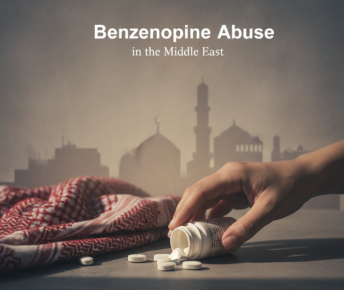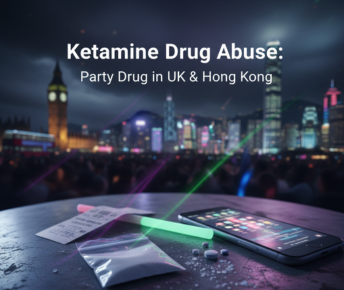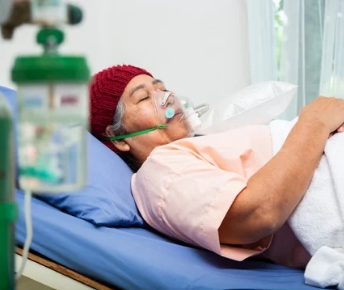Drug addiction, recognized clinically as a substance use disorder, is a chronic disease characterized by compulsive drug seeking and use despite harmful consequences. This complex condition involves an interplay of biological, psychological, and environmental factors. The impact of drug addiction extends beyond mere behavioral disruption, deeply affecting the body's physiological systems and overall health. Here’s a quick read to take you through it.
How Drug Addiction Can Impact Human Body
1. Immediate Physical Effects
Drugs can cause widespread changes in the body, affecting almost every organ system. Stimulants such as cocaine increase heart rate and blood pressure, potentially leading to cardiovascular problems, while opioids can slow respiratory function, increasing the risk of hypoxia, a condition where not enough oxygen reaches the brain. These acute changes can have immediate, life-threatening consequences, including overdose.
2. Long-Term Physical Health Consequences
Chronic drug use can lead to severe health issues over time. For example, intravenous drug use is associated with an increased risk of infectious diseases such as HIV and hepatitis due to needle sharing and poor immune function. Liver disease is common among those who abuse alcohol or other toxic substances, while lung damage is a significant risk for smokers of substances like tobacco and marijuana.
3. Neurological Impact
Addictive substances alter the brain's structure and function, primarily targeting the brain's reward system. By flooding the circuit with dopamine—a neurotransmitter linked to pleasure, movement, and emotion—drugs condition the brain to repeat the behavior. Over time, the brain adapts to the excess dopamine, which diminishes the user's ability to derive pleasure from other activities and contributes to the compulsive nature of addiction.
4. Substance Withdrawal Symptoms
Withdrawal symptoms occur when drug use is reduced or stopped after heavy and prolonged use. These withdrawal symptoms can be physical and psychological, ranging from mild (anxiety, agitation) to severe (seizures, hallucinations). Withdrawal from opioids, for example, can trigger symptoms like muscle aches, sweating, and gastrointestinal distress. These symptoms are often a significant barrier to quitting, driving continued use and addiction.
5. Psychological and Emotional Effects
Drug addiction can exacerbate or lead to mental health disorders such as anxiety, depression, and bipolar disorder. The psychological grip of addiction can disrupt emotional stability, social behavior, and cognitive functions, making it difficult for individuals to manage everyday life and maintain healthy relationships.
6. Deaddiction Therapy
Deaddiction, or addiction treatment, is tailored to the individual's needs and may include a combination of medication, counseling, and support groups. Effective treatment addresses all aspects of the addiction—physical, psychological, and social. Therapies might include behavioral therapy to help modify the patient's thinking and behaviors related to drug use and pharmacotherapy to manage withdrawal symptoms and prevent relapse.
7. Role of Drug Recovery Centers
Drug recovery centers are crucial in the fight against addiction. These facilities provide a structured and supportive environment for overcoming drug dependency. Recovery programs often include detoxification, therapy sessions, and skill-building activities designed to help individuals rebuild their lives. The supportive setting helps mitigate the risk of relapse and aids in the recovery of physical and mental health.
8. Social and Economic Impact
The effects of drug addiction extend beyond the individual, affecting families and communities. The economic burden includes healthcare costs, lost productivity, and the expenses associated with crime and legal proceedings. Socially, addiction can lead to stigma and isolation, further complicating recovery efforts.
9. Prevention and Public Awareness
Preventing drug addiction involves education, early intervention, and public policy measures. Increasing awareness about the dangers of drug use and improving socio-economic conditions can reduce the incidence of addiction. Public health strategies must focus on educating the youth, regulating prescription drug use, and providing adequate mental health services.
Conclusion
Drug addiction is a pervasive issue that necessitates a comprehensive approach to treatment and prevention. Understanding the multi-faceted impact of drugs on the body and mind is essential for developing effective interventions. With ongoing support and appropriate treatment, recovery is possible, highlighting the importance of addressing this global health challenge head-on.
Samarpan Recovery offers a comprehensive and compassionate approach to drug addiction treatment, utilizing evidence-based methodologies that cater to the specific needs of individuals. With a focus on holistic healing, Samarpan provides a range of services to address both the physical and psychological aspects of addiction.
Their team of expert health professionals and counselors ensures that each person receives personalized care aimed at achieving long-term recovery and enhancing overall mental health. This commitment to excellence and personalized care makes Samarpan Recovery a beacon of hope for those seeking to overcome addiction and regain control of their lives.
























 Yes, many offer serene environments and solid therapeutic frameworks. However, quality varies, so it’s essential to research accreditation, staff credentials, and therapeutic depth.
Yes, many offer serene environments and solid therapeutic frameworks. However, quality varies, so it’s essential to research accreditation, staff credentials, and therapeutic depth.




